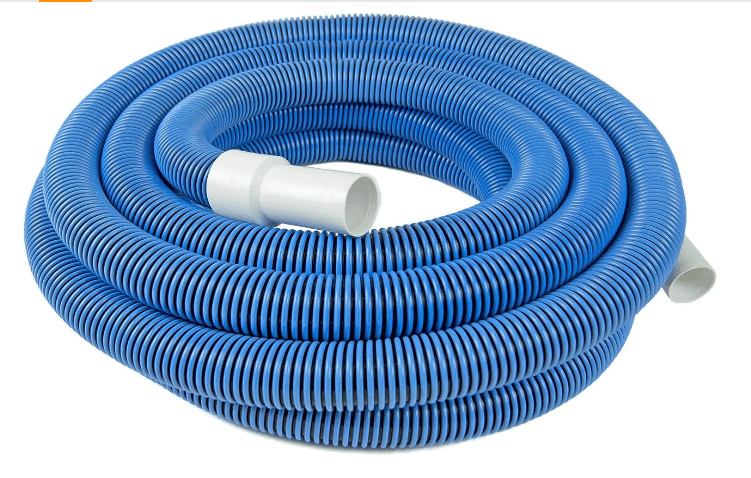The brake booster vacuum hose connects the intake manifold to the brake booster for power assistance. It ensures proper brake functioning.
The brake booster vacuum hose is a crucial component in a vehicle’s braking system. This hose connects the intake manifold to the brake booster, allowing the engine’s vacuum to provide power assistance to the brakes. Without this connection, the brake booster would not function effectively, leading to potential safety hazards and decreased braking performance.
Regular inspection and maintenance of this vacuum hose are essential to ensuring the proper functioning of the braking system and overall vehicle safety. Understanding the role of this hose can help drivers maintain their brakes and prevent potential issues on the road.
| Image | Product | Features | Price |
|
Our Pick
1
 |
Vacuum Hose |
360 x 1.5 x 1.5 inches |
|
|
2
 |
Vacuum hose |
Lightweight and durable |
Signs Of A Failing Brake Booster Vacuum Hose
A failing brake booster vacuum hose can exhibit several signs that indicate it needs attention. Reduced brake power is a common indication, causing the brake pedal to feel spongy and require increased pressure to engage. This can also lead to the illumination of the brake warning light on the dashboard, signaling potential safety concerns. Addressing these signs promptly can prevent further damage and ensure optimal brake performance.
| Image | Product | Features | Price |
|
Our Pick
1
 |
vacuum hose |
Lightweight and durable |
How To Inspect A Brake Booster Vacuum Hose?
When inspecting this vacuum hose, it is crucial to visually check for any signs of wear, cracks, or leaks. Look for any visible damage or deterioration on the hose, including bulges or soft spots. Additionally, manually inspect the hose by gently squeezing it to feel for any sponginess or weakness, which could indicate a problem. If any issues are detected during the inspection, it is important to replace the hose promptly to ensure the proper functioning of the brake booster system.
How To Replace A Brake Booster Vacuum Hose?
Gather the Necessary Tools: Before starting, ensure you have pliers, a wrench, and a new brake booster vacuum hose.
Remove the Old Brake Booster Vacuum Hose: Locate the hose, detach it using the pliers, and carefully remove it from the brake booster.
Install the New Brake Booster Vacuum Hose: Attach the new hose to the brake booster, secure it with the wrench, and ensure it is tightly fitted.
Test the Brakes: Start the engine, press the brake pedal to check for proper response, and confirm there are no leaks in the new hose.
Preventative Maintenance For A Brake Booster Vacuum Hose
Regular Inspection: It is important to regularly inspect the brake booster vacuum hose for any signs of wear, cracks, or leaks. Check for any loose connections or damaged fittings that could compromise the hose’s integrity. Inspecting the hose as part of routine maintenance can help identify potential issues before they escalate, ensuring the brake system operates effectively.
Replacement Schedule: Establishing a replacement schedule for the brake booster vacuum hose is crucial for maintaining optimal performance and safety. Consult the vehicle’s manual or a professional mechanic to determine the recommended replacement interval based on the specific make and model. Adhering to a proactive replacement schedule can help prevent unexpected failures and maintain the brake system’s reliability.
Frequently Asked Questions
What Does A Brake Booster Vacuum Hose Do?
The brake booster vacuum hose helps to increase the braking power of a vehicle by using engine vacuum. When the brake pedal is pressed, the vacuum created by the engine is used to amplify the force of the pedal, allowing for easier and more effective braking.
What Happens When A Power Brake Booster Has A Vacuum Leak?
A vacuum leak in a power brake booster can result in decreased brake assist, causing a harder brake pedal feel.
What Hose To Use For A Brake Booster?
Use a high-pressure hose with a tight seal for the brake booster. It should be resistant to heat and corrosion. Regularly check for any wear or damage.
What Happens If You Take The Vacuum Line Off Brake Booster?
Removing the vacuum line from the brake booster can lead to a loss of power assist in braking.
Conclusion
In essence, ensuring your brake booster vacuum hose is in top condition is crucial. Neglecting this component can lead to braking issues and compromise safety. Regular inspections and maintenance can prevent unexpected breakdowns and ensure smooth driving experiences. Prioritize the health of your brake system for optimal performance.
